Koyasan, which is considered a sacred place for Shingon Esoteric Buddhism, founded by Kobo Daishi Kukai.
It seems that the whole of Koyasan is called “Sohonzan Kongobuji Temple”.
This is also a place where you can enjoy both family and touring.
Daimon
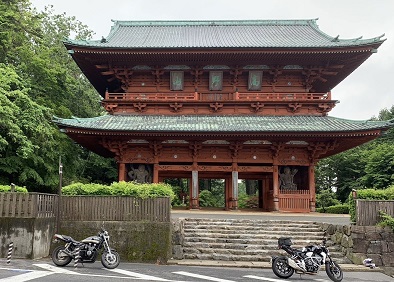
▲This Daimon is the first thing you see when you run around Koyasan.
Koyasan is the head temple of Shingon Buddhism and one of the most important temples in Japanese Buddhism.
Koyasan’s Daimon is the building that serves as the entrance to this temple, and is a popular spot that many worshipers visit.
The main gate of Mt. Koya, the 25.8-meter-high multi-story large gate. The powerful 4.8m-tall Kongo Rikishi statues on both legs of the main gate are said to have been made by Yasui, the Buddhist sculptor, and by Uncho Hohbashi, respectively. The view from here is good, and on clear days you can see the Kitan Strait and Awaji Island beyond the mountains.
出展:和歌山県公式観光サイトより
Konpon Daito

▲The building is quite large, brightly colored and stands out.
It is said that the height is about 50 meters. The first floor is square and the second floor is circular.
The current building was rebuilt in 1937 with reinforced concrete. I was able to go inside.
Since ancient times, it has been called Konpon Daito because it was built as a symbol of the main training hall of Shingon Esoteric Buddhism. The principal image is Dainichi Nyorai, surrounded by the four Buddhas of the Kongo world, the 16 pillars are 16 Bodhisattvas, and the walls in the four corners are 8 that convey esoteric Buddhism. The statue of Hasso is drawn, and the inside of the hall itself is constructed as a three-dimensional mandala.
出展:和歌山県公式観光サイトより

Kudoyama, the place where the mother of Kukai (Kobo Daishi), the founder of Koyasan, lived, is also closely related. See also this article.
Look of Kongobu-ji Temple
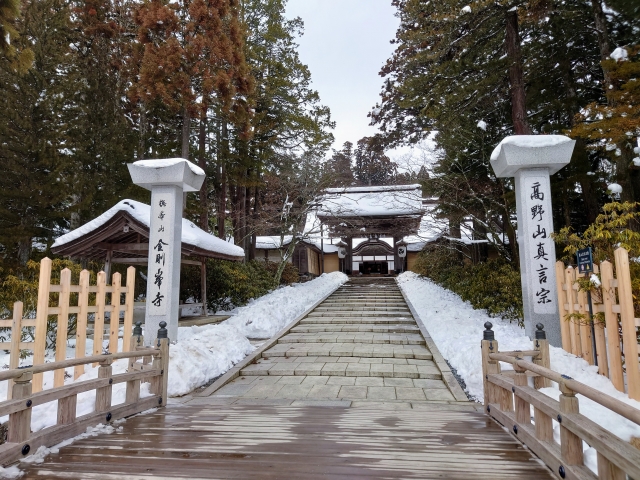
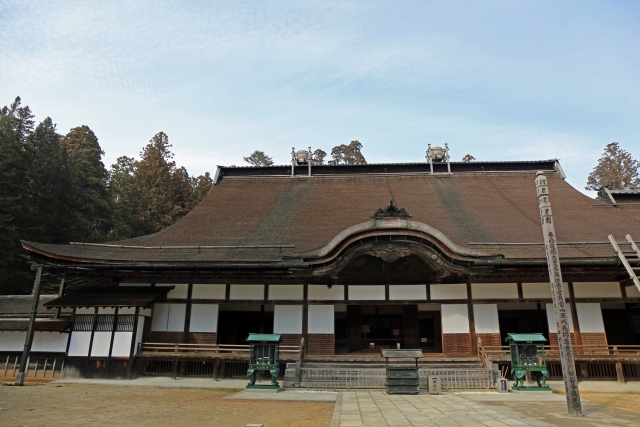
This is the entrance of Kongobu-ji Temple. In Japan, it is an important place to learn even in school history classes.
Kongobu-ji Temple was founded by Kobo Daishi during the Heian period. It is the head temple of the Shingon sect. You can also visit the main hall
The head temple of Koyasan Shingon Buddhism. The building with the grand entrance was rebuilt in 1863. The main hall is a large building with 30 ken from east to west and 35 ken from north to south. A white eagle is depicted.
Source: Wakayama Prefecture Official Tourism Site
I was able to tour the inside. In the interior where you can feel the historical view, you can enjoy the different paintings on the fusuma in each room and the dry landscape garden.
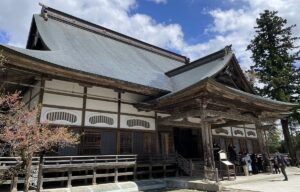
Kongobuji Temple Infomation
| Info | Koyasan Shingon Buddhism Head Temple Kongobu-ji Temple ■Location 132 Koyasan, Koya-cho, Ito-gun, Wakayama Prefecture ■Business hours 8:30~17:00 ■Parking lot Parking available ■Inquiries Tel:0736-56-2011 ■Website https://www.koyasan.or.jp/ |
| Map | |
| Official saite |
Okunoin
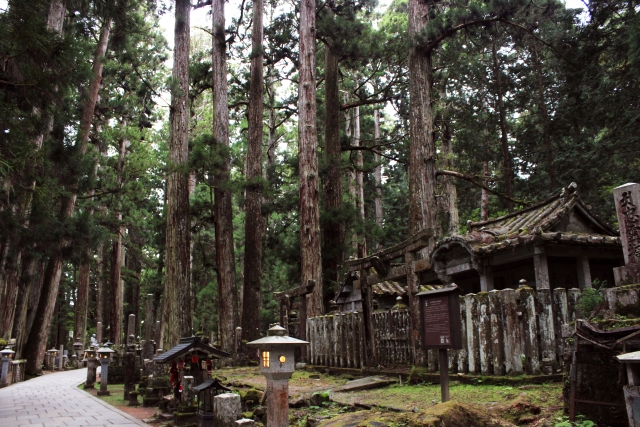
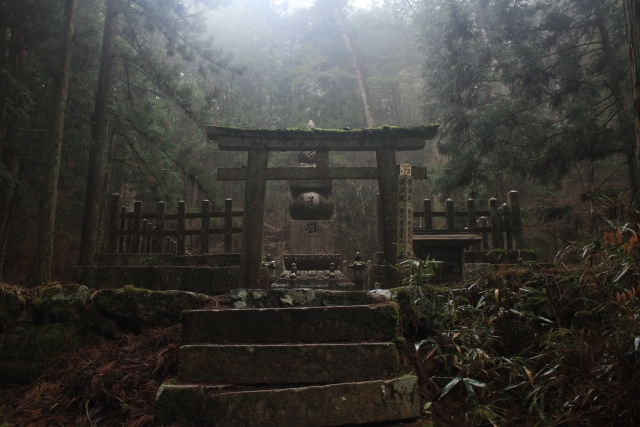
Together with the Danjo Garan, it is the center of Koyasan faith and is a sacred place where Kobo Daishi is enshrined. The 2-kilometer approach from Ichinohashi to the mausoleum is lined with more than 200,000 tombstones of feudal lords, memorial monuments, and cenotaphs in a 1,000-year-old cedar grove.
Source: Wakayama Prefecture Official Tourism Site
What is nyujo?
Nyujo is a legendary belief passed down in the Shingon sect.
The original meaning simply means “entering meditation,” but it specifically refers to the belief that Kobo Daishi Kukai is in eternal meditation.
Source:Wikipedia
There are various theories, but some say that no one saw him after he entered the throne, while others say that he continued to travel around the world.
Positional relationship from Daimon to Okunoin
Only Okunoin is quite far away, but it seems that it takes 46 minutes for 3.9 km to go around all on foot.
A route bus is also running, so it seems good to use that while sightseeing. Many tourists from foreign countries are also visiting, whether it is a tour.

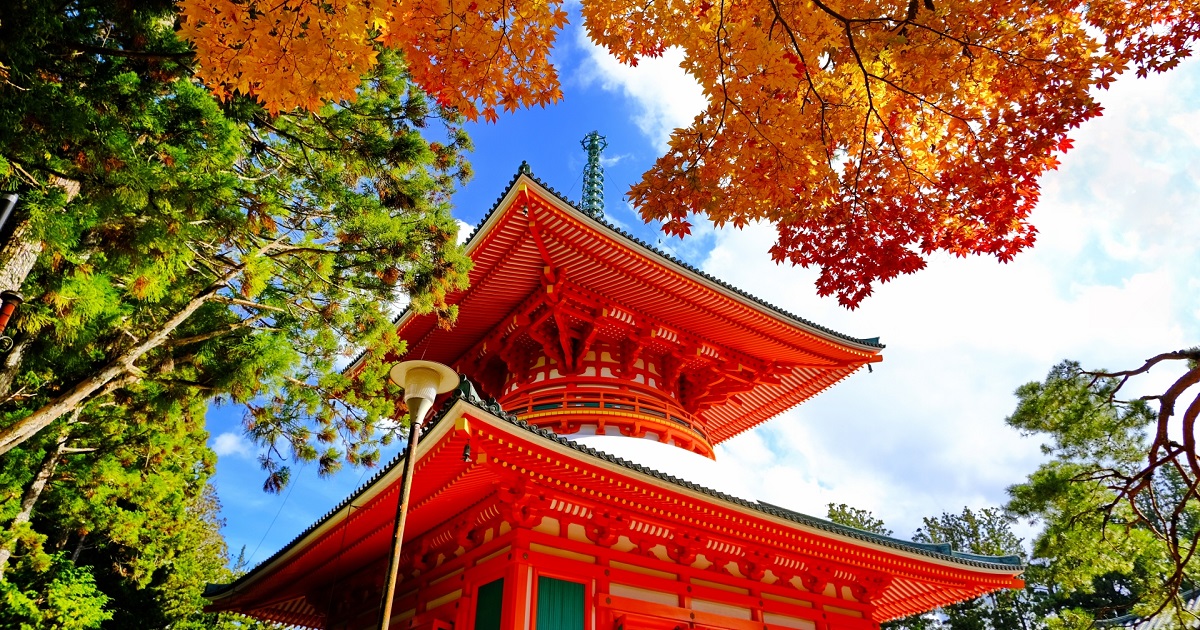
Comments